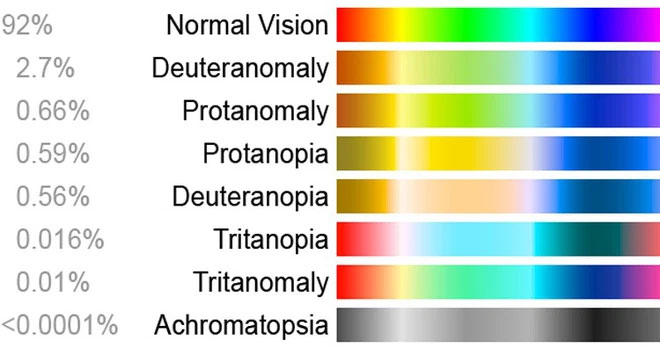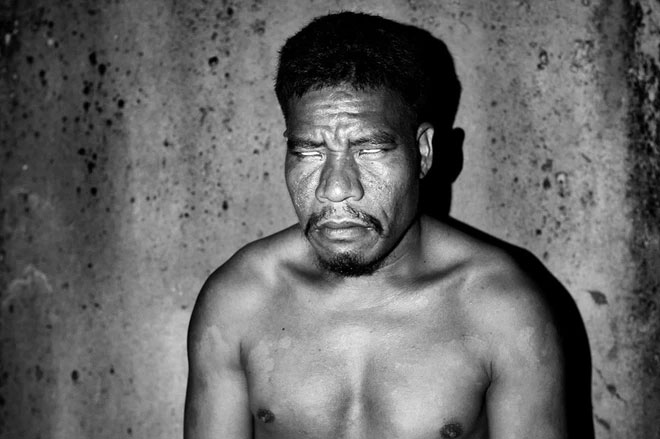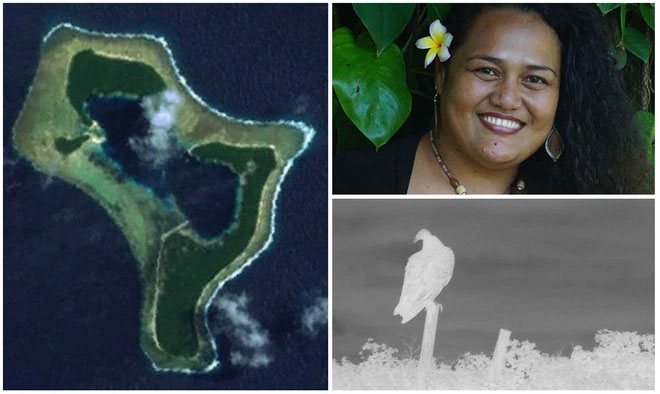Imagine being surrounded by a colorful world but unable to fully perceive it. It may sound sad, but this is a reality for those who are colorblind. Not everyone has perfect color vision. But can you envision an island where 10% of the population is colorblind, and some are completely colorblind?
Pingelap, a small coral atoll in the Pacific Ocean, has an unusually high number of colorblind residents. Moreover, it is not typical colorblindness—where one struggles to distinguish between red and green or blue and yellow. The colorblind residents of this tiny island can almost only see the world in black and white.

Pingelap Atoll consists of three islands and has a land area of 455 acres. It has its own language and a population of 250 people.
Located in the Pacific Ocean, Pingelap Atoll is part of Pohnpei State. It comprises three islands, but Pingelap is the only inhabited one. This coral island covers an area of 455 acres, with its widest point being less than 4 km. Pingelap has a population of 250, and its language is called “Pingelapese”. Most residents on the island speak this language. The island has a tropical climate, with warm and consistent temperatures year-round.

The most notable feature of the island is that 10% of its population is completely colorblind, a result of a severe storm that occurred in 1775.
In 1775, a deadly storm named “Lengkieki” devastated Pingelap, killing most of the island’s residents. After the storm and the subsequent famine, only about 20 survivors remained.
One of the survivors, who was also the ruler of the island at the time—King Okonomwaun—is believed to have carried the gene now known as “CNGB3.” This gene is located on Chromosome 8 and is responsible for one of the most common forms of rod monochromacy. This recessive genetic disorder is known to cause complete colorblindness or achromatopsia.
It is believed that cultural and geographical isolation led to many generations of inbreeding among the survivors, making this recessive gene more prevalent. However, interestingly, carriers of this gene do not exhibit the disorder.
The founder effect refers to the loss of genetic variation that occurs when a new population is established by a very small number of individuals from a larger population. It was first thoroughly outlined by Ernst Mayr in 1942, building on the theoretical work of individuals like Sewall Wright.
Colorblindness occurs as a result of inbreeding and the “founder effect”—“Founder effect,” which is why all colorblind individuals on the island can trace their ancestry back to the original ruler with the CNGB3 gene. Furthermore, individuals with this disorder struggle to see in sunlight. However, their night vision is significantly better than that of non-affected individuals, allowing them to easily detect movement or objects in low-light environments.

The CNGB3 gene was first identified in 2000 by a group of researchers at Johns Hopkins University School of Medicine.
After more than 30 years of research on Pingelap and the population of colorblind individuals on this island, scientists finally uncovered the answer in 2000. Geneticists Irene Hussels Maumenee and Olof Sundin from Johns Hopkins University School of Medicine examined the DNA of 32 island residents, only 50% of whom were colorblind. After several tests and studies, they were able to trace the gene responsible for this condition. Their findings were published in the journal Nature Genetics.
To this day, Pingelap Atoll remains a topic of interest for geneticists around the world. The combination of a small gene pool and rapid population growth has made achromatopsia unusually prevalent on the island. Nearly 10% of the island’s population is colorblind. In the United States, only 0.003% or 1 in 33,000 people are colorblind.

Eric, a resident of Pingelap Island, suffers from colorblindness. Pingelap has only one street and no shops or restaurants. The islanders live by harvesting coconuts and fishing. In the late 18th century, a tsunami wiped out the entire population of the island, leaving only 20 survivors, including a king. This king later had many descendants who helped rebuild the island. Many of his descendants carry the rare gene for achromatopsia (complete colorblindness), and this condition continues to be passed down through generations on the island.

The residents of Pingelap Island report that they primarily see red, purple, and blue, but most can only see in black and white. In a monochromatic world of colorblind individuals, “color” is merely an abstract term.

In daylight, the world of the colorblind residents of the island is no different from a burned photograph. They have to squint their eyes when stepping outside. For them, daytime and sunlight are torturous.
















































